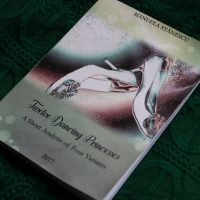
”A Kiss to Wake the Sleeper” by Rabih Alameddine
The title of the text recalls the “Sleeping Beauty” fairy tale. The text also preserves two of its most important characters: the sleeper and the wake‑r. The girl’s condition that forces her to stay captive in an antiseptic bubble is symbolic for the princess who is held captive in her own sleep. Read on …









